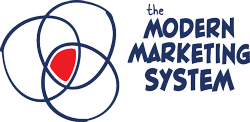Simple Testing Framework
In this post, we’re going to unpack a simple testing framework that will dramatically improving your marketing.
How simple?
Well…we “stole” it from a popular children’s show (and there’s even a sing-a-long to help you remember it which we’ve included in the P.S.).
We know what you’re thinking…children’s show…sing-along…have you two lost your minds?
Trust us, you’re going to love it…
And, more importantly, it works.
Before we share that framework, and a few examples to get you started, let’s take a step back and ask the obvious question:
Why bother testing at all?
Or, more accurately, why bother testing if you’re not a 7 to 9-figure business generating thousands of leads and hundreds of orders per day?
Without a lot of data, conventional (and exotic) approaches to testing (A/B, multivariate, Taguchi) aren’t likely to produce actionable results quickly enough to be useful.
More importantly, those testing methods are only as good as the questions they’re set up to answer, and identifying those questions is where you’ll find the most opportunity and leverage.
Asking (and answering) good questions designed to improve your marketing is a valuable skill you can learn…
That’s the foundation of effective testing.
All you need to do is ask and answer three questions, in order:
- I wonder…
- What if?
- Let’s try…
That’s it. Seriously.
Those three questions capture the real value of testing. You don’t get that value from a fancy tool or a complicated method.
Instead, benefits from testing can be found in curiosity-fueled inspiration implemented consistently in service to the larger goals of your business or creative passion.
“I found that, let’s say you use Optimizely to split test landing pages or whatever, you can test ‘C’ and ‘C+’ and ‘C-‘ ideas against each other all day, and you’ll always get statistical winners — but, what if you just came up with ‘A’ and ‘A+’ ideas? And that’s where we’ve really spent a lot of our time in PN. Rather than taking such a metrics heavy approach to lead generation and working through our traffic funnels, just some up with better quality ideas. Because an ‘A’ is going to beat a ‘C’ every day, and I don’t need a metric to know that.” — John Berardi, PhD (co-founder of Precision Nutrition) interview with Craig Ballantyne. (John sold Precision Nutrition for $200 million in 2017.)
Here’s the framework in action (with an example that may look familiar).
I wonder…if there’s a relationship between active interest in a promotion and overall sales performance?
What if…we only send promotional emails to people who have raised their (virtual) hands in advance to indicate they’re interested?
Let’s try…creating a separate interest list for our next promotion and only send emails about that promotion to people who are on that list.
(For the record, we don’t actually wonder about this. Sending promotional emails only to people who have raised their hands is a fundamental principle we teach in the Art of Email.)
Here’s another example that led to the creation of The Durable Business…
We wonder…what would be most valuable to the segment of our audience that is trying to turn a business idea into enough income to quit a full-time job?
What if…we created a business from nothing: $0 — to $100,000+ in revenue and showed our work along the way?
Let’s try…articulating the way we think about digital marketing as a Jim Collins-inspired ‘flywheel’ that we’ll use to create a brand new business while students watch over our shoulders.
These two examples are the types of high-level questions to ask when you’re thinking about improving an existing business or structuring a new business opportunity.
The details are less important than the discipline of asking and answering good questions.
However, we also recognize that there’s plenty of room for improvement day to day and week to week…
This framework works equally well in those scenarios too.
For example: let’s assume you’re spending $25/day on Facebook advertising generating leads for your business, and you’d like to improve your results.
First, we need to be clear about what those results are and what better means. Will it Make the Boat Go Faster? is a helpful framework to answer those questions.
Let’s assume, for this example, that we’re currently generating five leads per day, 20% of those leads become customers within the first 30 days, and our refund rate is 10%.
That means every thirty days we’re spending $750 to acquire twenty seven happy customers.
(Here’s the math if you’re curious: 5 leads x 30 days = 150 leads x 20% = 30 customers — 3 refunds = 27 customers.)
So how do we define “better?”
- More leads? (No.)
- Better conversion rate? (No.)
- Lower refund rates? (No.)
Better = more happy customers.
The other metrics may (or may not) contribute to that.
It’s not the individual contributions that matter — it’s how those individual parts interact to produce the outcome we care about that matters most.
Now that we understand how we’ll evaluate our test results, let’s look at some examples for each of the three questions we’re asking.
Start with curiosity! Step back and see where your imagination leads.
I wonder…
- If short, curiosity-driven ads perform better than long ‘red velvet rope’ ads designed to filter people out?
- If speaking to my audience’s fears is more powerful than speaking to their desires?
- If a Sphere of Influence-inspired multi-page pre-sell site performs better than a traditional opt-in?
What if..?
- We A/B-tested curiosity vs. ‘red velvet rope’ strategies?
- We created new ad copy for our audience’s biggest fears and most meaningful desires?
- We created a three-page version of our current landing page with the opt-in at the end instead of the beginning?
Let’s try…
- Splitting our ad budget 50/50 between curiosity and ‘red velvet rope’ strategies for 45 days to determine which performs better.
- After we get results from the curiosity vs. ‘red velvet rope’ strategy test, let’s split our ad budget 50/50 between fear-focused ad copy and gain-focused ad copy for the next 45 days.
- Increase our ad budget by $25/day and compare everything we’re testing with our current, traditional opt-in page to a new multi-page presell site keeping all of the other factors exactly the same.
Don’t be fooled by the simplicity of this testing framework.
It’s elegant and effective, and you can start benefiting from it today.
—Shawn & André
P.S. If you’d like to see the catalyst for today’s email (proving you can find inspiration anywhere), take two minutes and watch Sesame Street: Hailee Steinfeld Sings I Wonder, What if, Let’s Try!

You don’t have to sing when you use this simple testing framework…but we’re also not saying you can’t sing either…
Note: This is a reprint of a previous Emergent Marketing Newsletter. If you’re not receiving our email newsletter, you can subscribe here.

